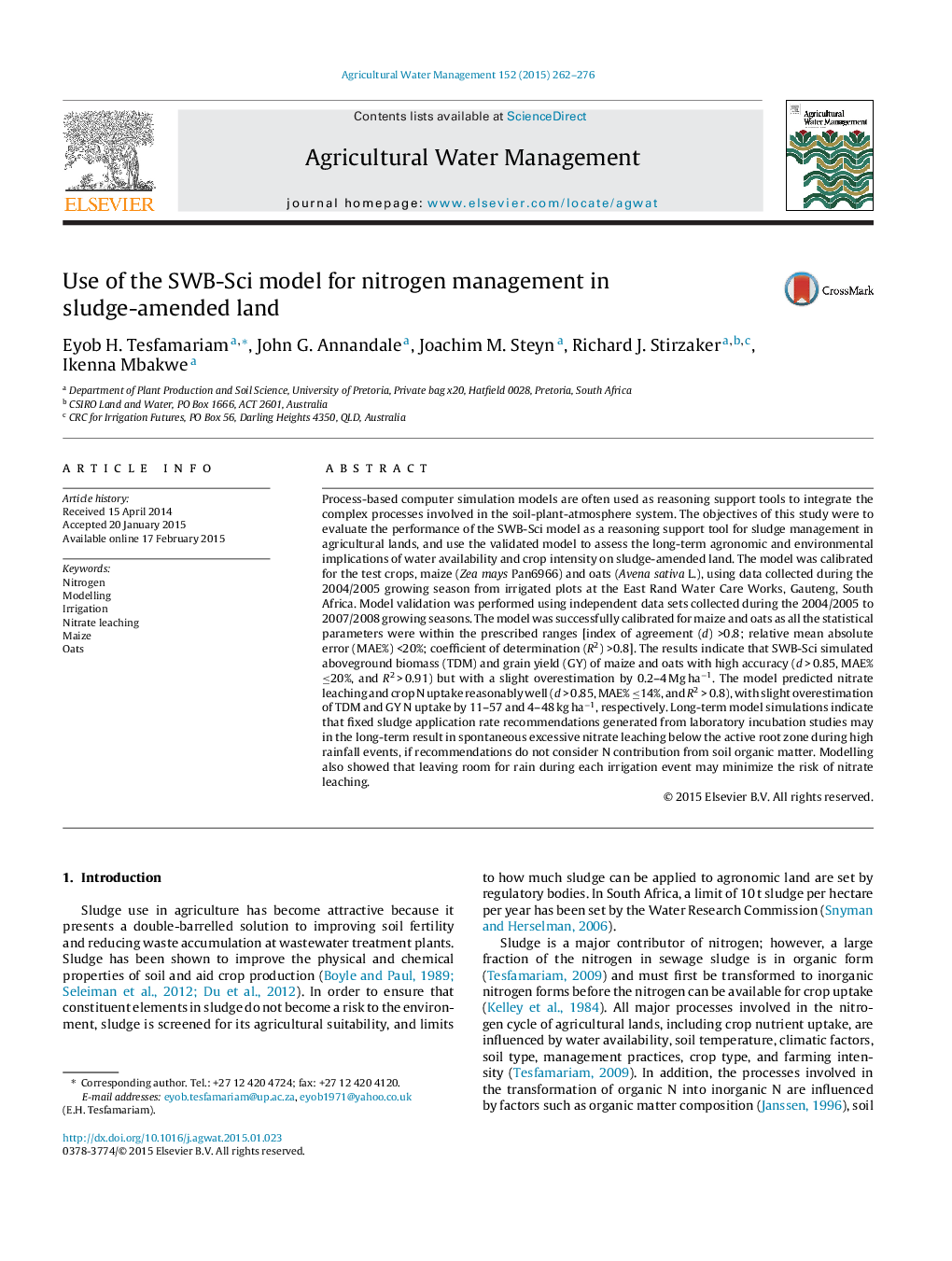| کد مقاله | کد نشریه | سال انتشار | مقاله انگلیسی | نسخه تمام متن |
|---|---|---|---|---|
| 4478538 | 1622927 | 2015 | 15 صفحه PDF | دانلود رایگان |

• It is easier to match N demand and supply of crops under irrigation than rainfed.
• Sludge application rates should consider rainfall regime and cropping intensity.
• Leaving room for rain during each irrigation event will minimize nitrate leaching.
• Modelling shows that fixed sludge rate could compromise either yield or environment.
• Fixed sludge rates under dryland systems may result in nitrate flushes during high rainfall events.
Process-based computer simulation models are often used as reasoning support tools to integrate the complex processes involved in the soil-plant-atmosphere system. The objectives of this study were to evaluate the performance of the SWB-Sci model as a reasoning support tool for sludge management in agricultural lands, and use the validated model to assess the long-term agronomic and environmental implications of water availability and crop intensity on sludge-amended land. The model was calibrated for the test crops, maize (Zea mays Pan6966) and oats (Avena sativa L.), using data collected during the 2004/2005 growing season from irrigated plots at the East Rand Water Care Works, Gauteng, South Africa. Model validation was performed using independent data sets collected during the 2004/2005 to 2007/2008 growing seasons. The model was successfully calibrated for maize and oats as all the statistical parameters were within the prescribed ranges [index of agreement (d) >0.8; relative mean absolute error (MAE%) <20%; coefficient of determination (R2) >0.8]. The results indicate that SWB-Sci simulated aboveground biomass (TDM) and grain yield (GY) of maize and oats with high accuracy (d > 0.85, MAE% ≤20%, and R2 > 0.91) but with a slight overestimation by 0.2–4 Mg ha−1. The model predicted nitrate leaching and crop N uptake reasonably well (d > 0.85, MAE% ≤14%, and R2 > 0.8), with slight overestimation of TDM and GY N uptake by 11–57 and 4–48 kg ha−1, respectively. Long-term model simulations indicate that fixed sludge application rate recommendations generated from laboratory incubation studies may in the long-term result in spontaneous excessive nitrate leaching below the active root zone during high rainfall events, if recommendations do not consider N contribution from soil organic matter. Modelling also showed that leaving room for rain during each irrigation event may minimize the risk of nitrate leaching.
Journal: Agricultural Water Management - Volume 152, April 2015, Pages 262–276